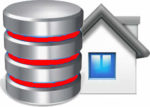There’s nothing like installing Oracle database when you haven’t done it for years, especially when it’s a new version. Moving from 12c to 18c is very similar (no they haven’t missed out 5 versions, they jumped straight to 18). It’s not like you need to keep re-installing Oracle all the time, do it correctly and it just works.
This installation was on Windows 10 Pro and I seem to remember where Oracle wanted you to put the programs on one disk/hard drive and the data on another disk – that might have been on Oracle 11c. But in the latest Windows 18c installer both Oracle Base and the Data location all defaulted to the C:\ drive. Although I did decide to still split the program and the data onto 2 separate physical hard drives.
The installation is reasonably quick and it’s easy to do, once you get your head around container databases and the pluggable databases which were introduced in Oracle 12c.
I also had to remember to install separate Oracle ODBC software in order to link the database to Microsoft Access.
Importing the old data ran smoothly with just changes in the ACL permissions. These ACL commands have now changed in 18c and are now called ACE commands. These allow you to grant access to external programs on the internet.
Previously my machine was a PC with a Core i7 processor from 2009 with 2x 500GB hard drives. Now in the new machine I have the 9th generation i7 processor and 2x Samsung M2 drives. With the Windows disk being a Samsung 250GB M2 drive and the data disk a Samsung 500GB M2 drive. I have got to say upgrading to M2 drives for Oracle was the best thing ever in order to speed up the running of procedures.
One procedure previously took around 30 minutes to run on the old 2009 PC, whereas on the 2019 PC with Samsung M2 drives now takes around 3 minutes.
 23a3644a-66cc-426a-9494-bbb56aa044a7′]
23a3644a-66cc-426a-9494-bbb56aa044a7′]
 882c1fde-eff5-4569-b463-e3186cba0ea9′]
882c1fde-eff5-4569-b463-e3186cba0ea9′]
